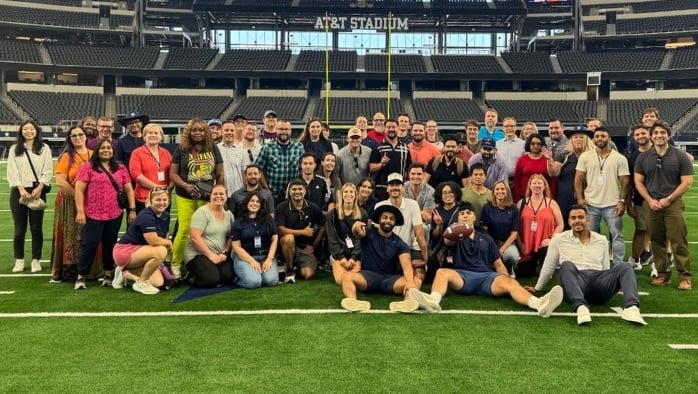Combat the ‘Silver Tsunami’ in the Government Industry
October 13, 2022The building and code enforcement industry continues to be dominated by those close to retirement, with no signs of slowing down. The public sector workforce is experiencing the impacts of so many professionals retiring within a short timeframe and facing challenges with more retirements in the immediate future.
What does the ‘silver tsunami’ mean?
In 2014, the International Code Council and National Institute of Building Sciences conducted a demographic survey to learn more about code professionals. The typical code professional was between the ages of 55 and 64. At that time, more than 80% of the existing workforce was planning to retire within 15 years, and 30% were planning to retire within the next five years (and now it has been eight years since this study).
Seeing as though most departments are rather small (more than half have nine or fewer employees), so many people retiring at once leaves a significant mark.
Building and code professionals often play many roles within their department: “Over half of the respondents (52 percent) had responsibility for plan review, with over 48 percent serving as building inspectors and 46 percent in department management...” The more roles they play, the greater the loss to each department upon retirement.
The number of professionals retiring does not equal the number of professionals able to take their place. There are not enough young professionals to fill the void – 15% of respondents were under 45 years of age, and only 3% were under 35.
This has been deemed the ‘silver tsunami’ by some, and something must change to attract more workers to the public sector – our communities depend on it.

Besides age, why are so many people in the public sector retiring?
In 2021, the MissionSquare Research Institute conducted a study on the impact of COVID-19 on the public sector workforce. It was discovered that many public sector workers are considering leaving their jobs – “52 of state and local workers are considering leaving their jobs voluntarily due to COVID-19 to do any or all of the following: change jobs, retire, and/or leave the workforce entirely.”
This number is alarming, especially considering that a quarter of those thinking about leaving their jobs would like to leave the government sector altogether. Some of the reasons staff are thinking about changing jobs and/or retiring are they need a better work-life balance, have faced tension working with the public, and want time to do things that bring joy.
“I ask governments if they could lose half of their workforce and still function, and everyone says no,” revealed Christine Brakefield, former CBO of seven years, now working at Avolve Software. “That chaos is on the horizon in the current public sector as half of the current workforce is either planning to retire or look for another job within the next couple of years. Leadership has a responsibility to figure out how to curb that, and technology is a great place to help reduce that stress and relieve some of those pressure points.”
How can technology help attract and retain employees in the public sector?

Technology can help alleviate these obstacles by improving efficiency and productivity at work. Online software specifically allows all information to be accessed in the same place, gives the public options to work from home instead of needing to travel to the office, and frees up valuable time for staff.
Better work-life balance, better relationships with the public, and more time to do things that bring joy will help local governments combat the silver tsunami by attracting and retaining more talent in the public sector.
Better work-life balance and more time to focus on joy
Online permitting and plan review software allow government workers to have more flexibility in their roles. They can work outside of typical office hours and accomplish tasks whenever it suits them best. They are not restricted to working in the office and can instead work from home or in the field.

The ability to access all information in one place improves productivity and efficiency. When building departments adopt online community development software, they can issue building permits 80% faster. It’s easier to collaborate as a team and results in a lessened workload, less stress, and more time for joy.
Better relationships with the public
Sometimes, the relationship between local governments and the public they serve can be tense. Processes can be slow and sometimes confusing for citizens, and this results in extra time spent answering questions, calls, and emails at the front counter.
“The government has a reputation of having a lot of barriers, even to gather information,” explained Brakefield. “People call in and are transferred to someone else and feel as though they are being passed around in a game of phone tag.”
It’s not just phone tag that causes tension, but that in-person and time-sensitive interactions are necessary.
“One of the most common complaints I received as a CBO was from citizens who worked the same hours our City Hall was open. They had no way of submitting permit applications in person during their working hours, and sometimes needed to take time off work to make it happen.”
Online software gives both government staff and citizens the freedom to work online from wherever and whenever, as Brakefield shares that online software and technology help remove barriers.
“It’s important and helpful to centralize information in a one-stop shop so citizens can easily find and consume the information they need in their own time. When citizens can interact with a centralized and virtual front counter, governments are not interrupted and can focus on their work. It makes a big difference when governments make their services more accessible, simple, and convenient for the public.”
What do governments need to know when deciding on software?
Governments benefit from knowing not to be afraid of change, the importance of research, and the value of learning how to effectively use a new solution.
Don’t be afraid of change
Many local governments have tried to find new ways to attract and retain new talent in recent years. Yet, some are still using paper or legacy systems.
“It can be difficult for building officials to make a change when they work in communities that are not progressive in thinking forward with technology,” Brakefield explained. “It can feel like a steep uphill climb to implement new technology, but I would tell building officials to not be afraid. The jump isn’t as big as it was ten years ago. Software options are getting better and better.”
Take the time to do research
As software options for plan review and permitting continue to improve and become more accessible to governments of all sizes, online processes can be adopted on a larger scale. This also means that it’s arguably more important to do relevant research to narrow down what options work best.
“As a former CBO, I went through the replacement of a permitting system, and there are a lot of choices out there,” shared Brakefield. “We don’t always know the right questions to ask, or what is a normal experience with new types of software. No one knows what they don’t know.”
“There are a lot of buzzwords that software companies use, like eliminating silos,” the former CBO continued. “Most local governments have such a mismatched collection of technologies so eliminating silos isn’t realistic. It’s better to look at small decisions and sections instead.”
Governments can talk to multiple vendors to compare different software and look for unbiased opinions from service providers to help narrow down a list of vendors. It can also be beneficial for departments to speak with other departments that have already adopted software to learn what works, and what doesn’t.
“Plenty of governments use permitting software, so it’s a good idea to learn from other governments’ successes and failures to make your own process smoother. It’s also valuable to listen to who has the right experience, rather than who has the loudest voice. Those who understand the benefit of how technology is going to help staff do their job better need to be involved in the decision-making process.”
Invest resources in learning how to use new technology
Almost as important as selecting the right software is the time invested in learning how to use it.
“Regardless of how good a technology product is, if governments don’t put in the work at the beginning, implementation will not be successful,” Brakefield revealed. “Departments need to make sure they have dedicated resources for an implementation project. It’s best to set time aside to put in the best effort.”
Onboarding is an important step in learning any new software, but it is also important to continue learning post-launch.

“Any user is only going to retain a small percentage of information when they learn a new technology,” she continued. “It’s only when departments start using it that more questions come up that they wouldn’t have known to ask during implementation.”
Access to training resources such as tutorial videos, articles, and support tickets can help users learn how to use their adopted software post-launch. Understanding how to use new software to its full potential leads to greater efficiency and success for all those involved, so it’s important to look at what support different vendors offer.
Thank you, government professionals
Online software can help local governments curb the impacts of the silver tsunami by welcoming new staff, as well as giving more time back to existing department members.
“Both permitting and plan review software deal with the health and well-being of a community because of how much communities rely on the built environment. The right technology leads to reduced workloads and stress, more economic development, and increased productivity, so it’s worth taking the time to discover the best software for each community.”
Building and code departments do meaningful work and deserve software that reflects the value they bring to their communities.
“Local governments make a great impact on their communities. They touch people’s lives every day,” concluded Brakefield. “Public servants can drive down the road and point at buildings they made safer, look at people they’ve helped, and smile to themselves at the difference they’ve made in their community, and they do all of this without much recognition. Public service isn’t easy, but it is rewarding.”
So, from the teams at Cloudpermit and Avolve Software, thank you to all those working in local government – we appreciate your invaluable contributions to your communities.
Learn more about Cloudpermit and Avolve Software, and let us know if you have any questions – we're happy to help you learn which software can curb the silver tsunami in your community best so you can continue to efficiently serve your community.


